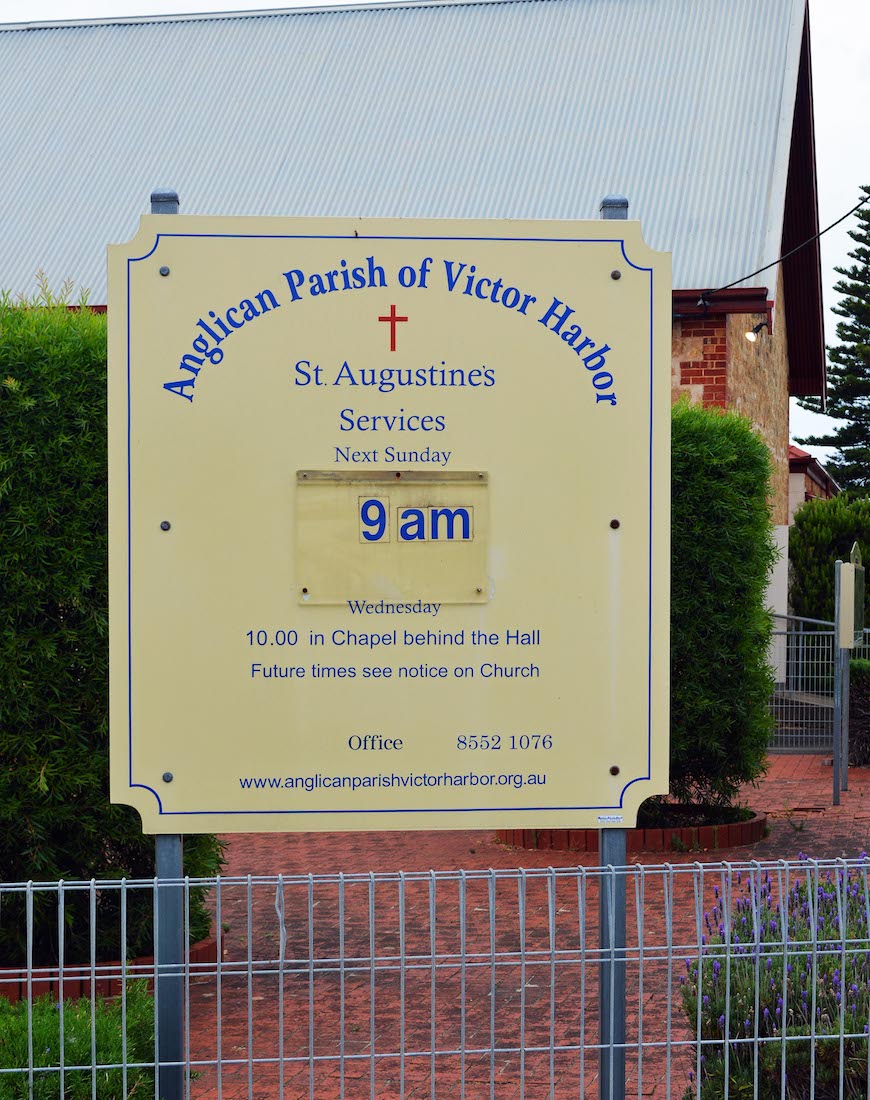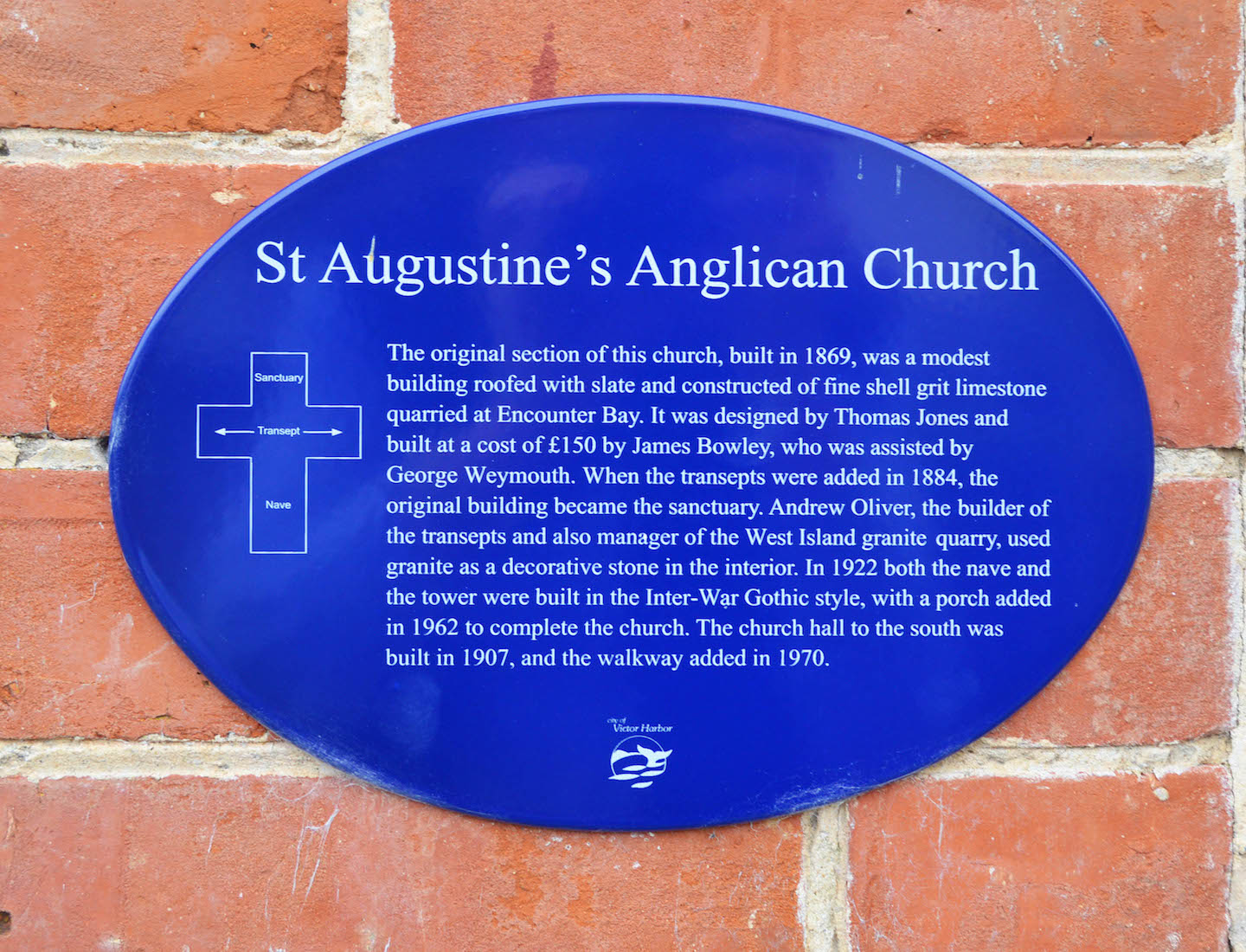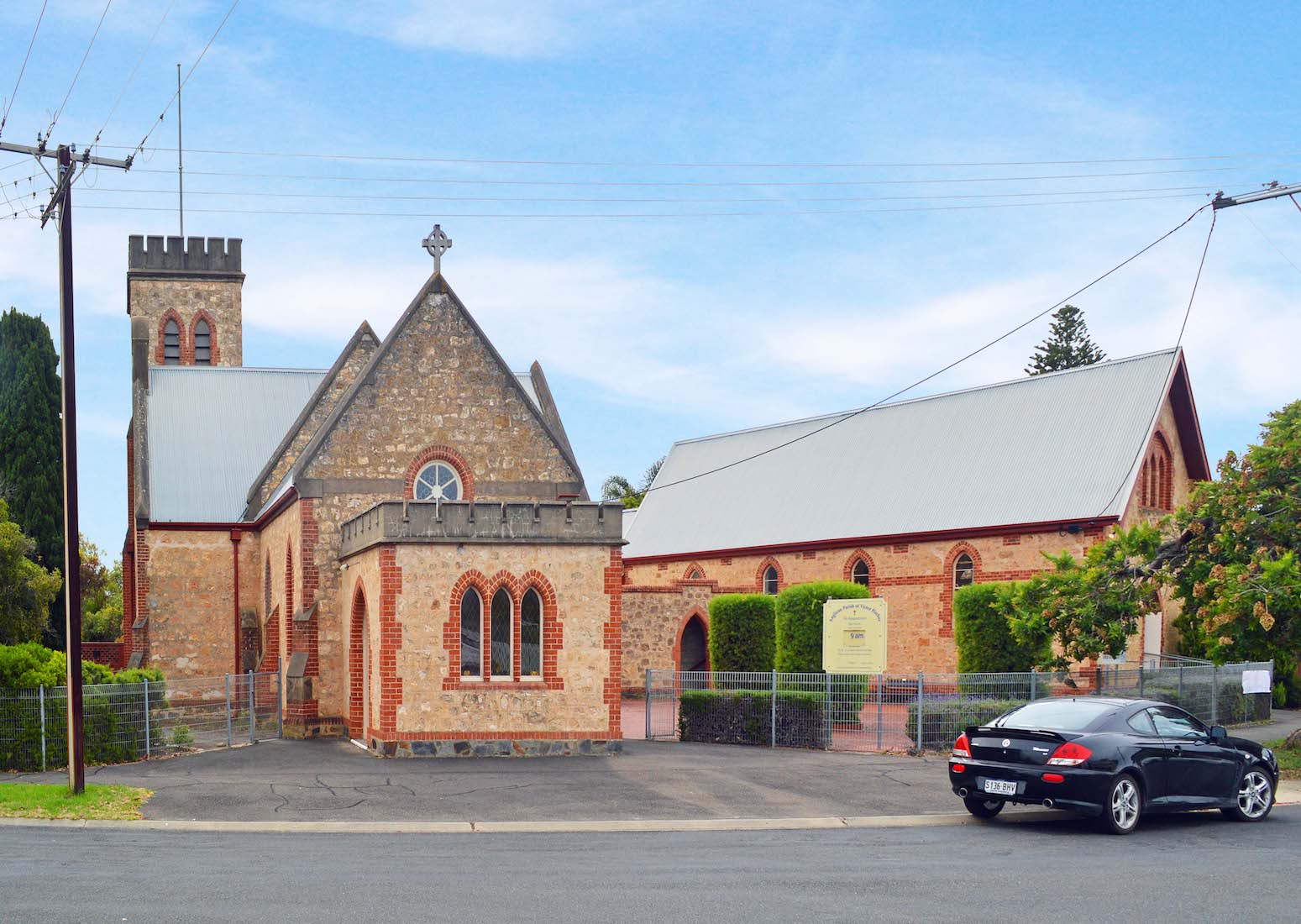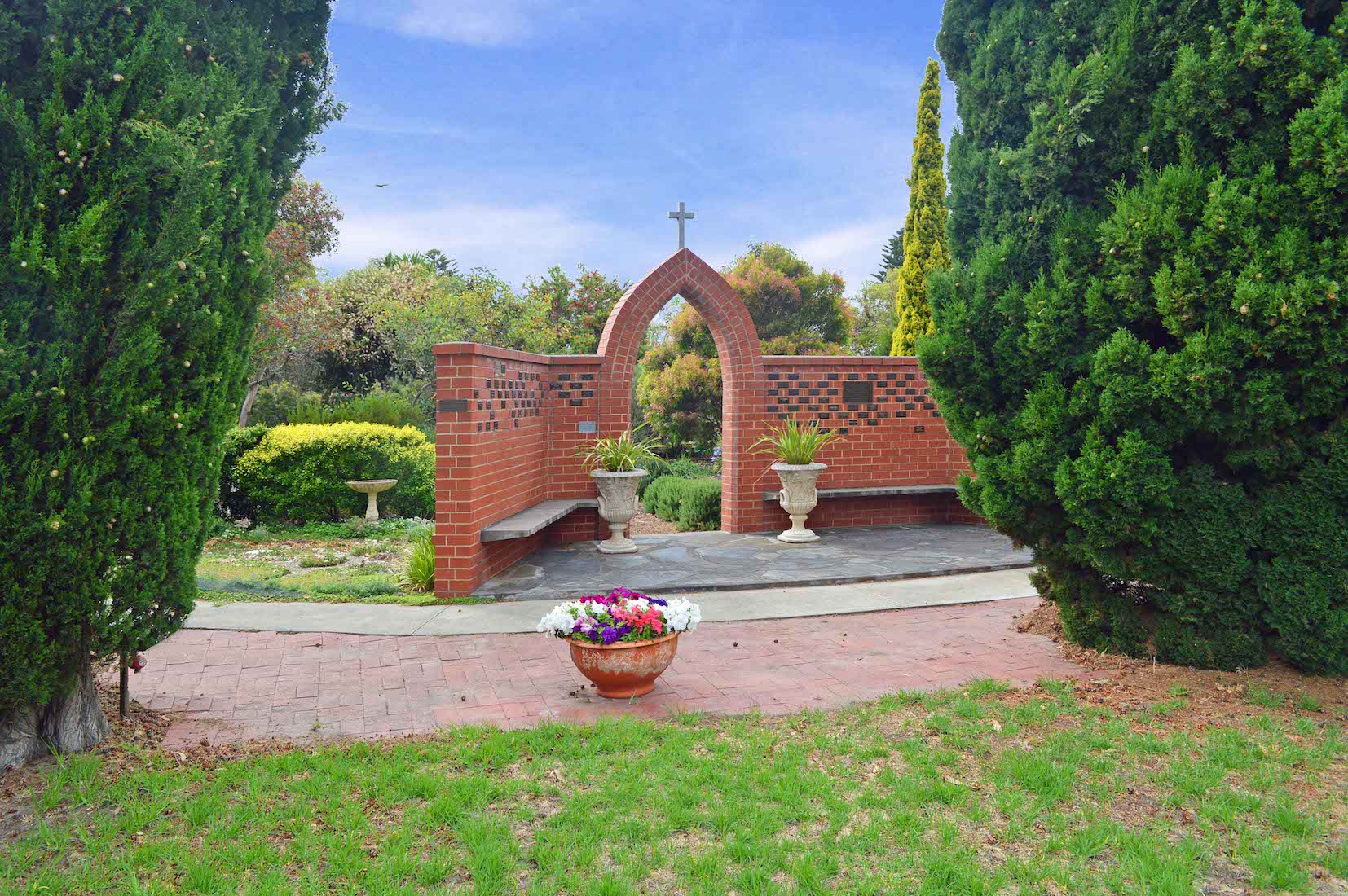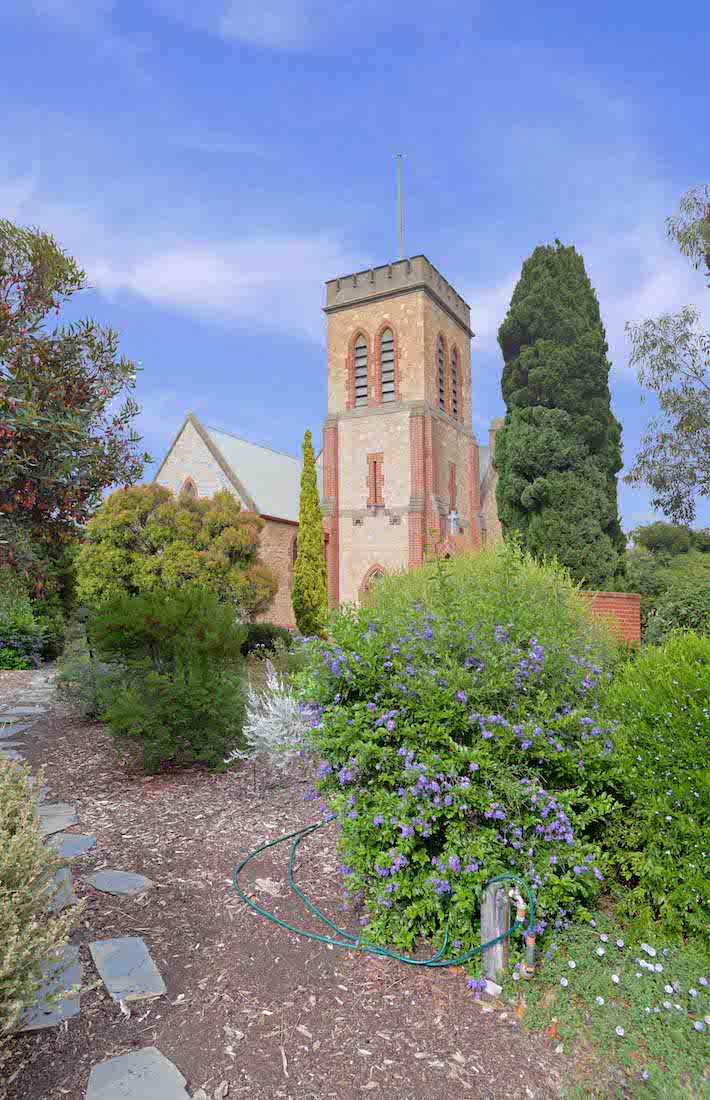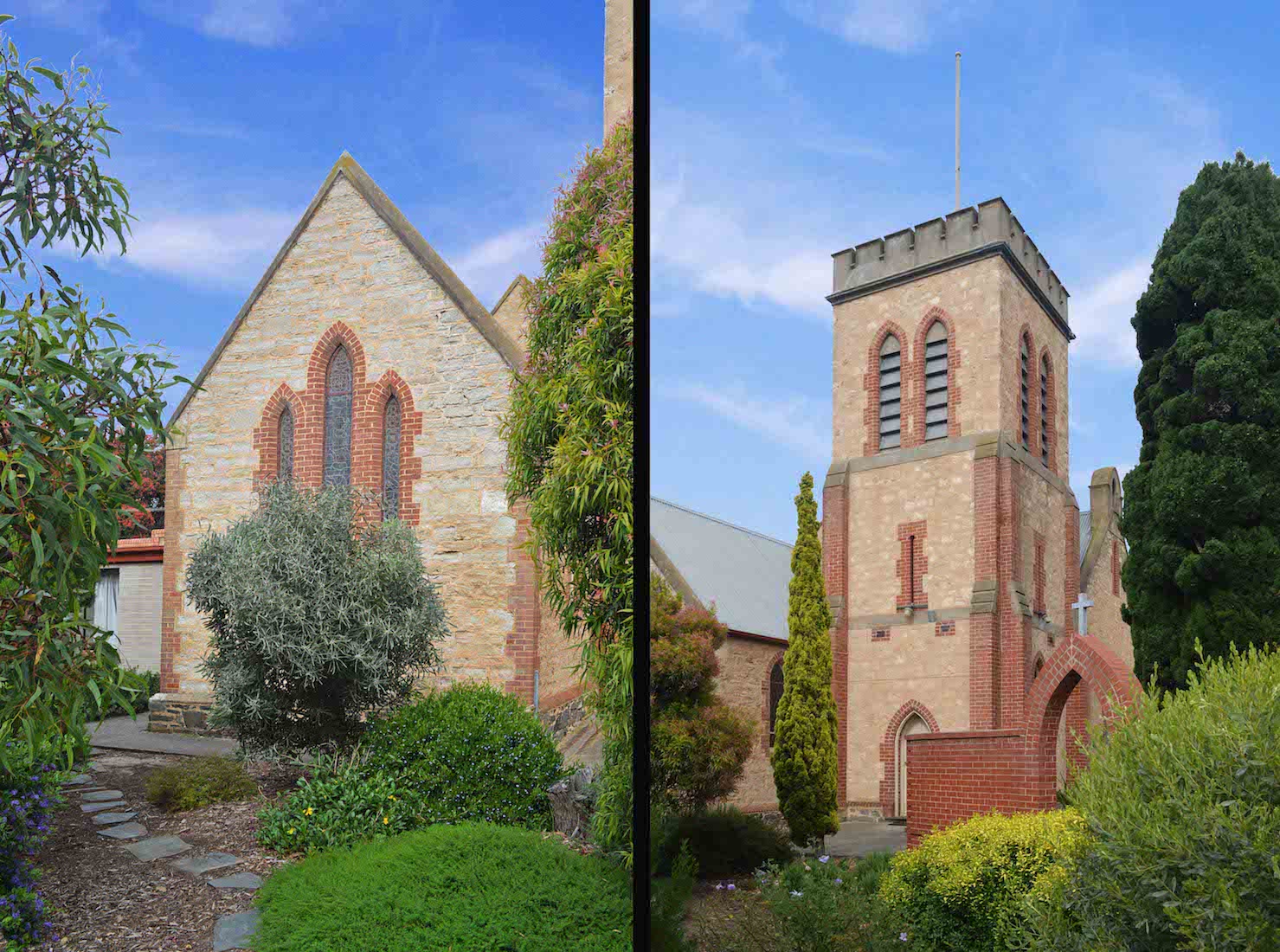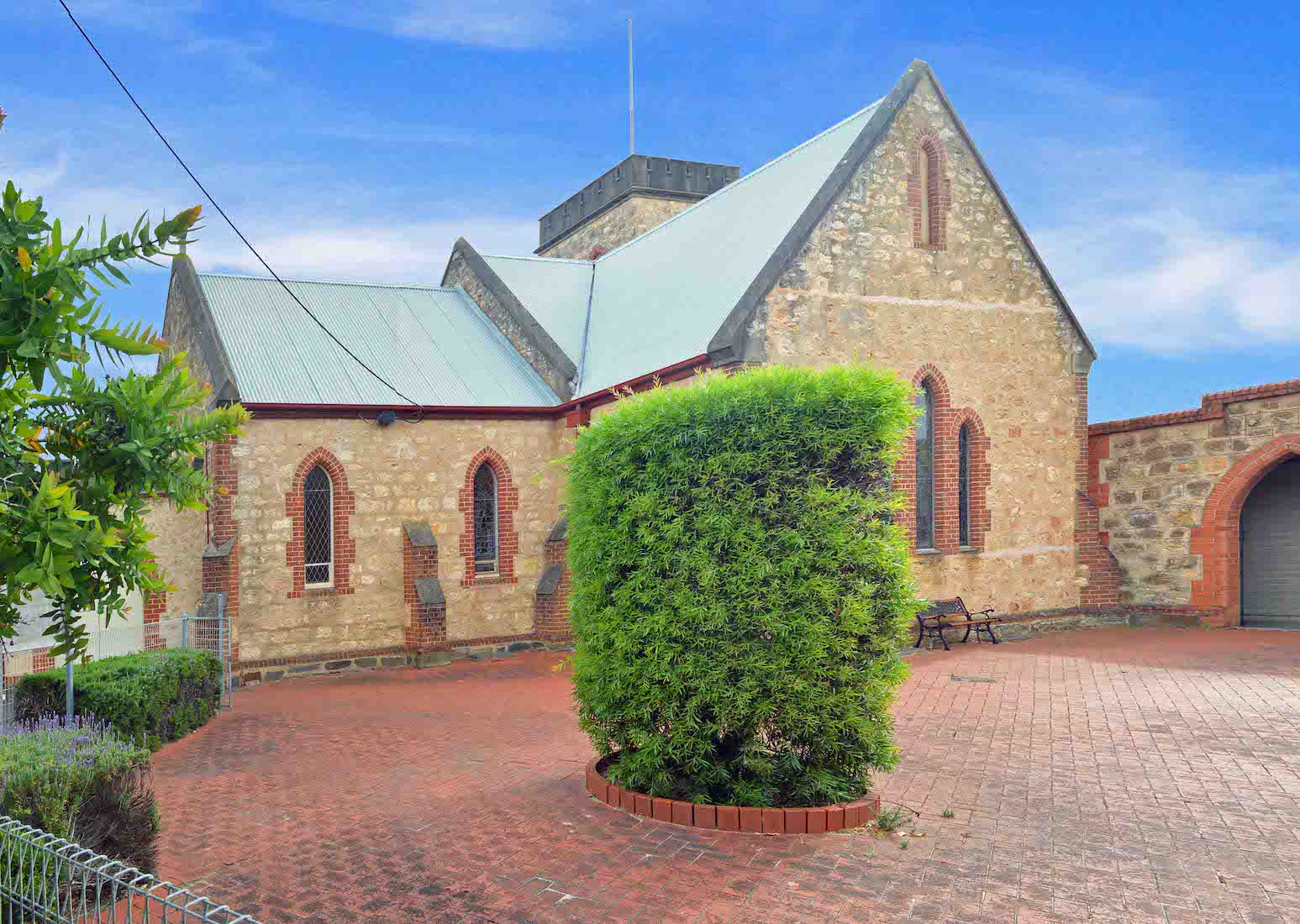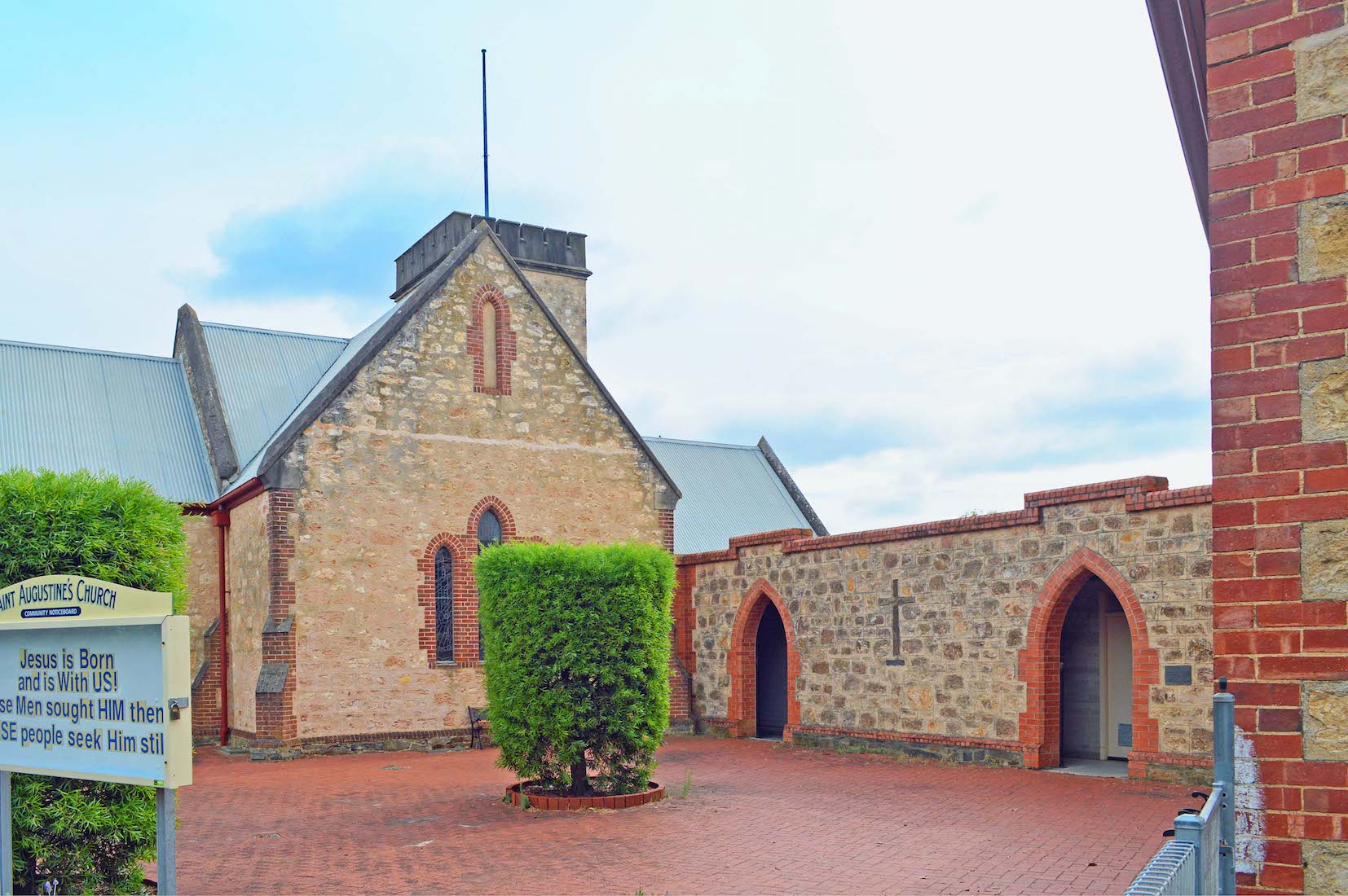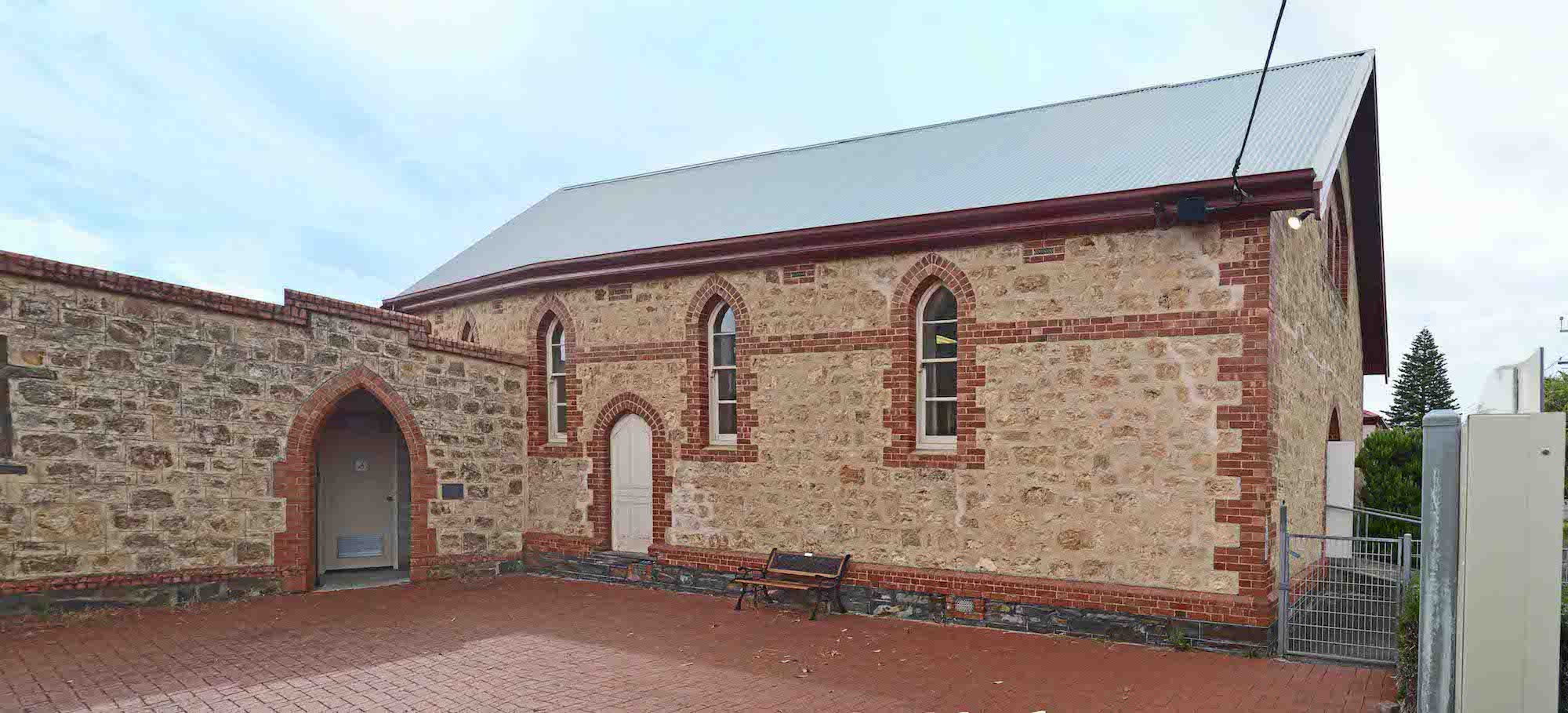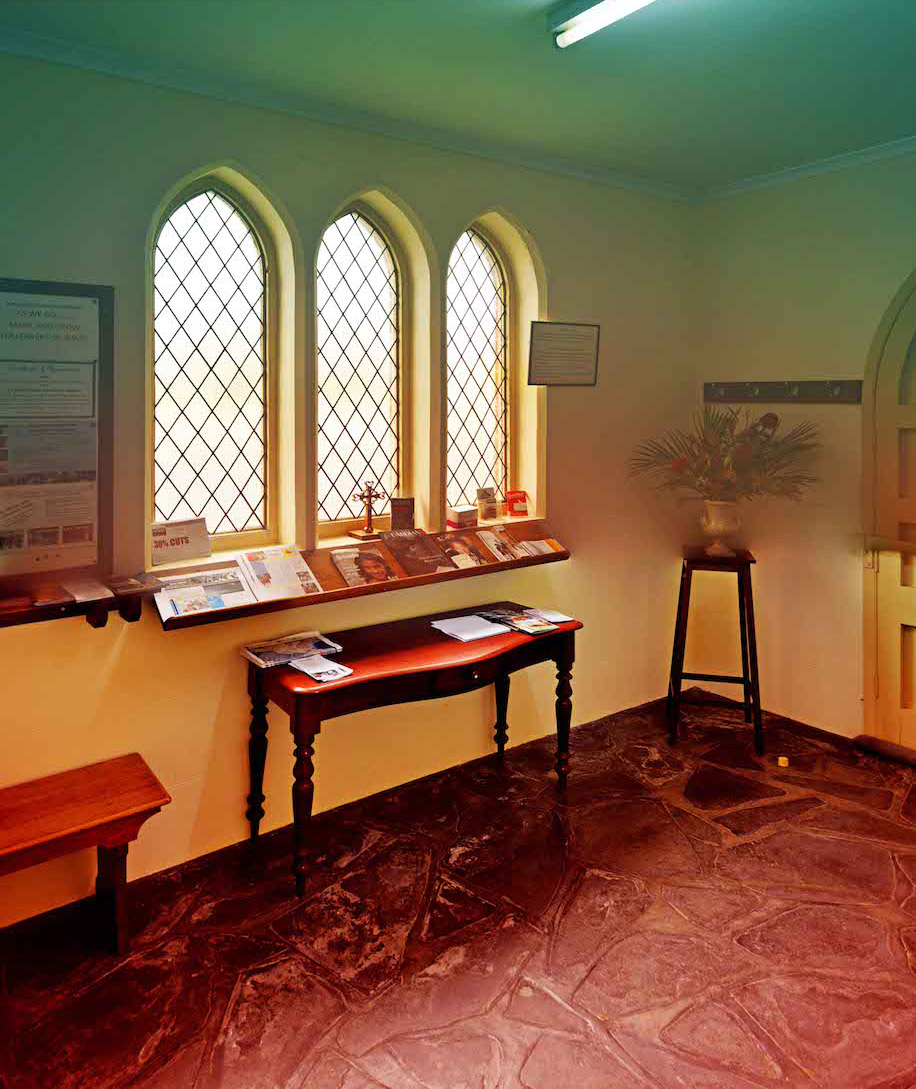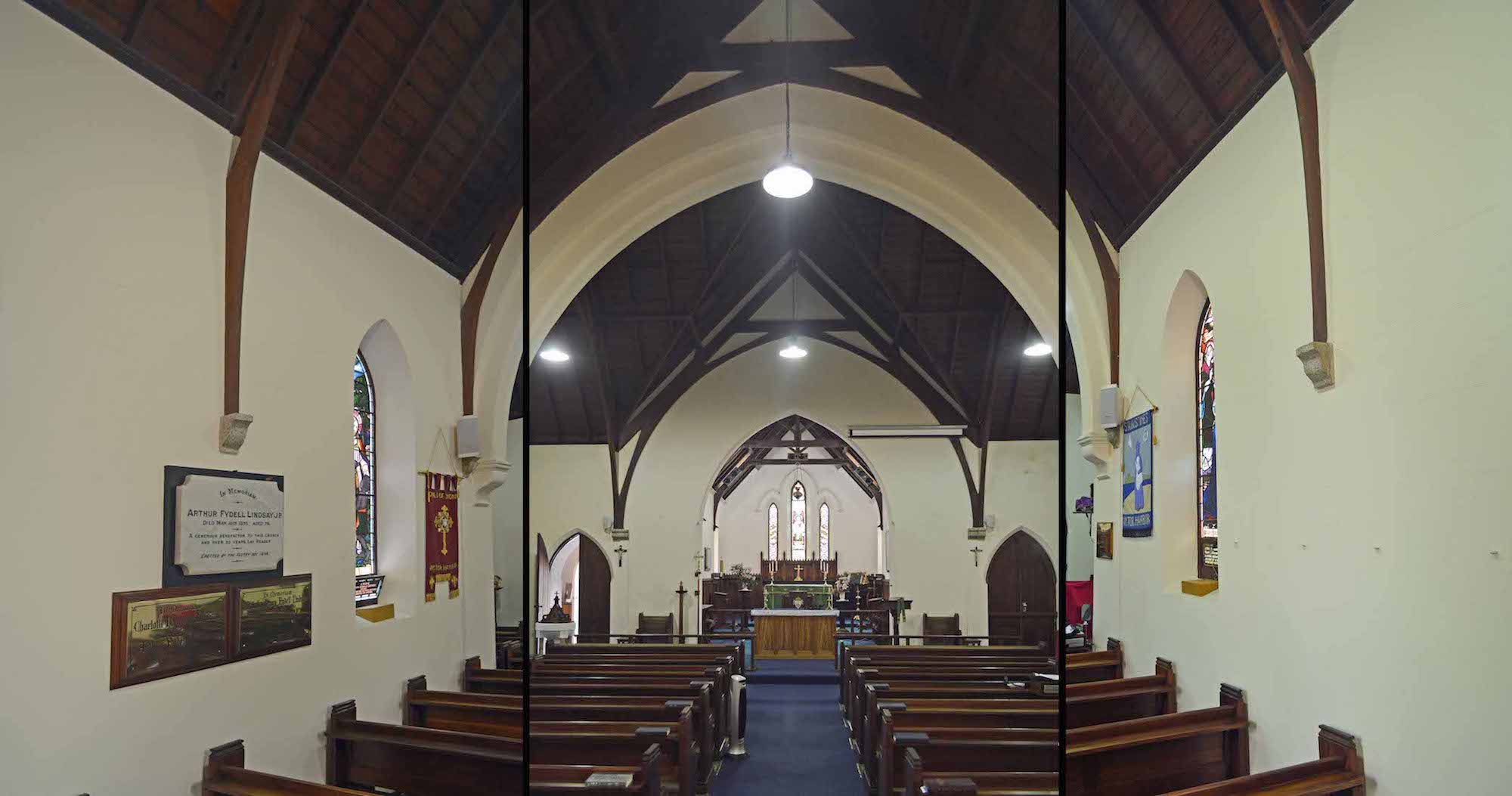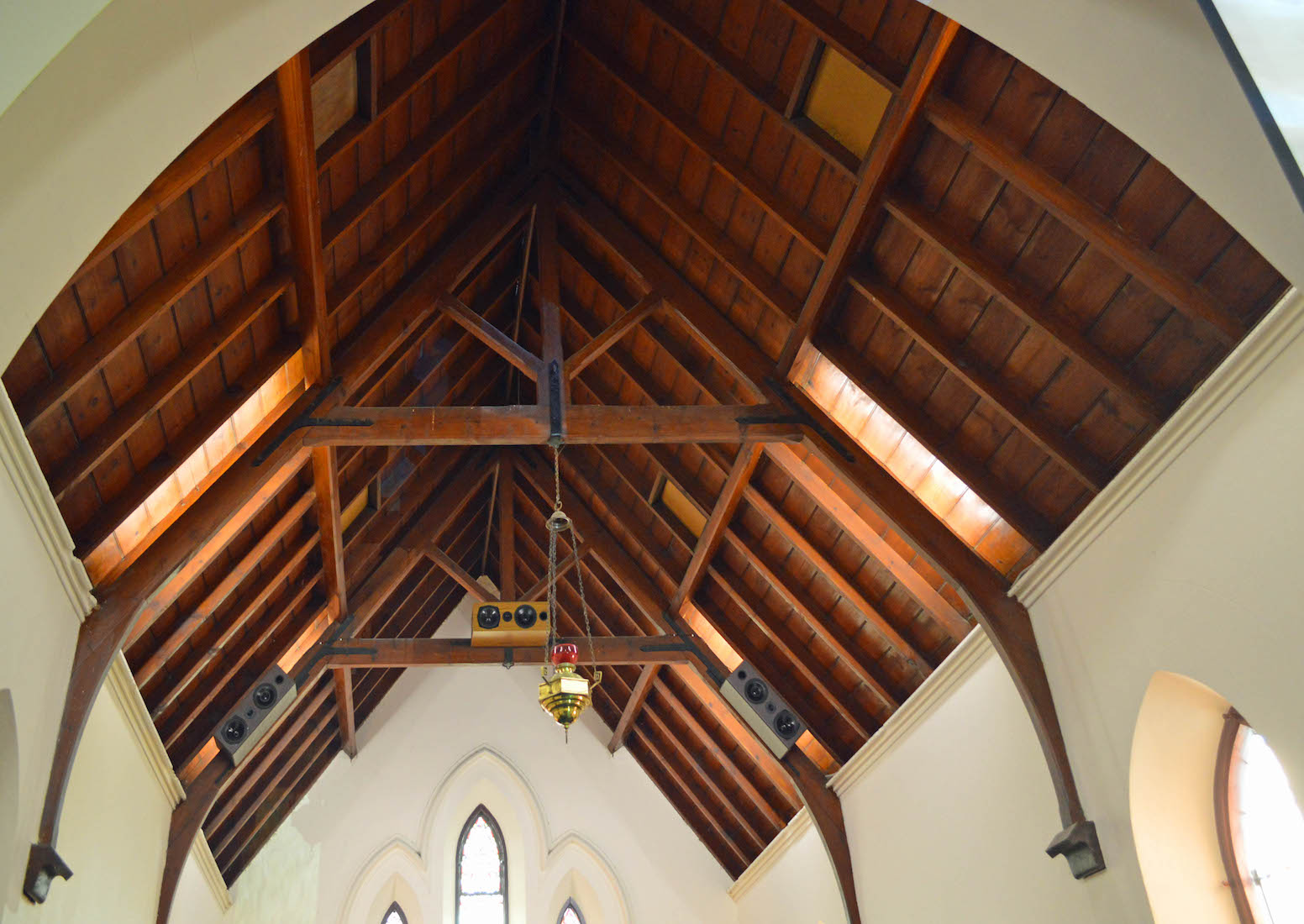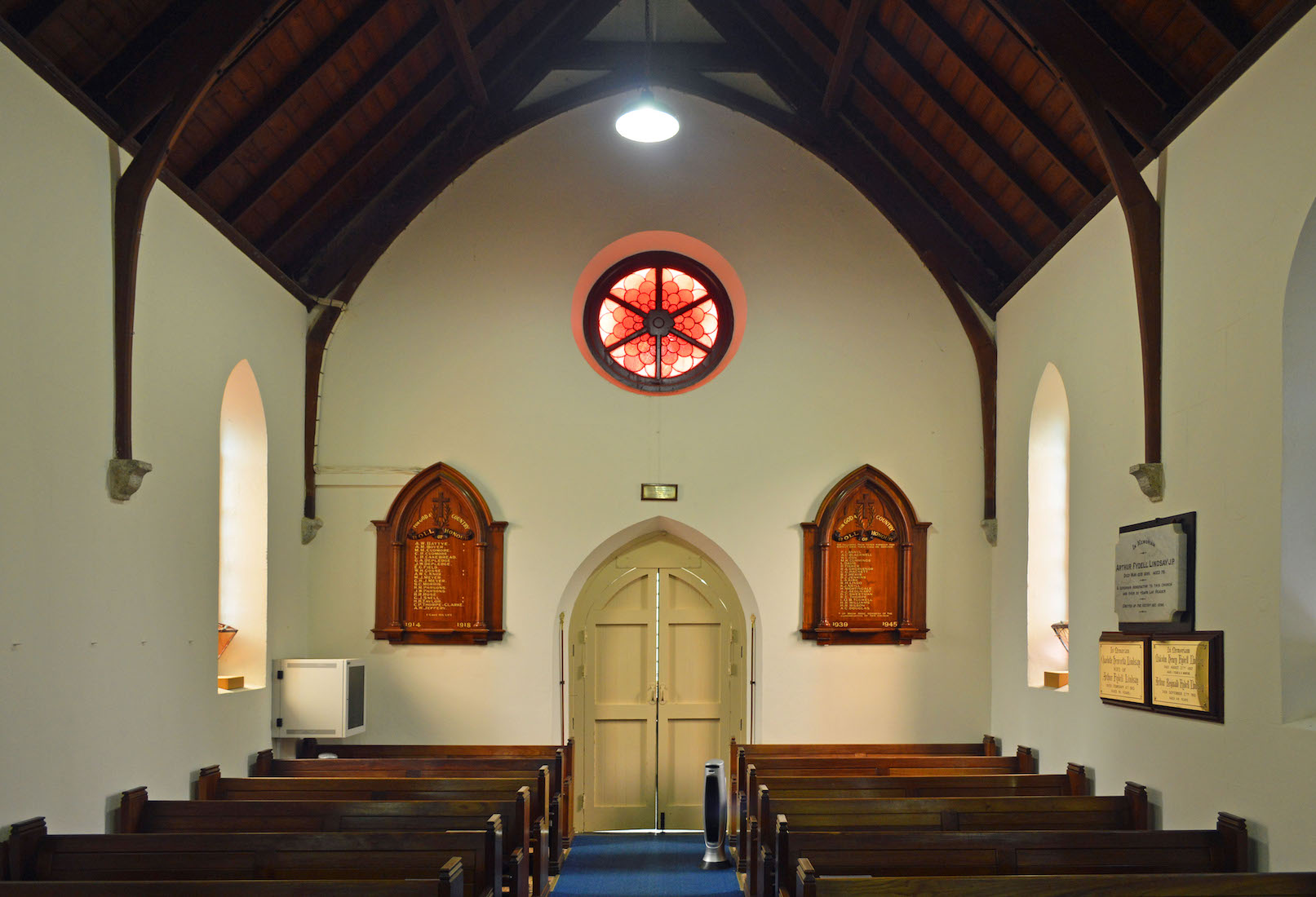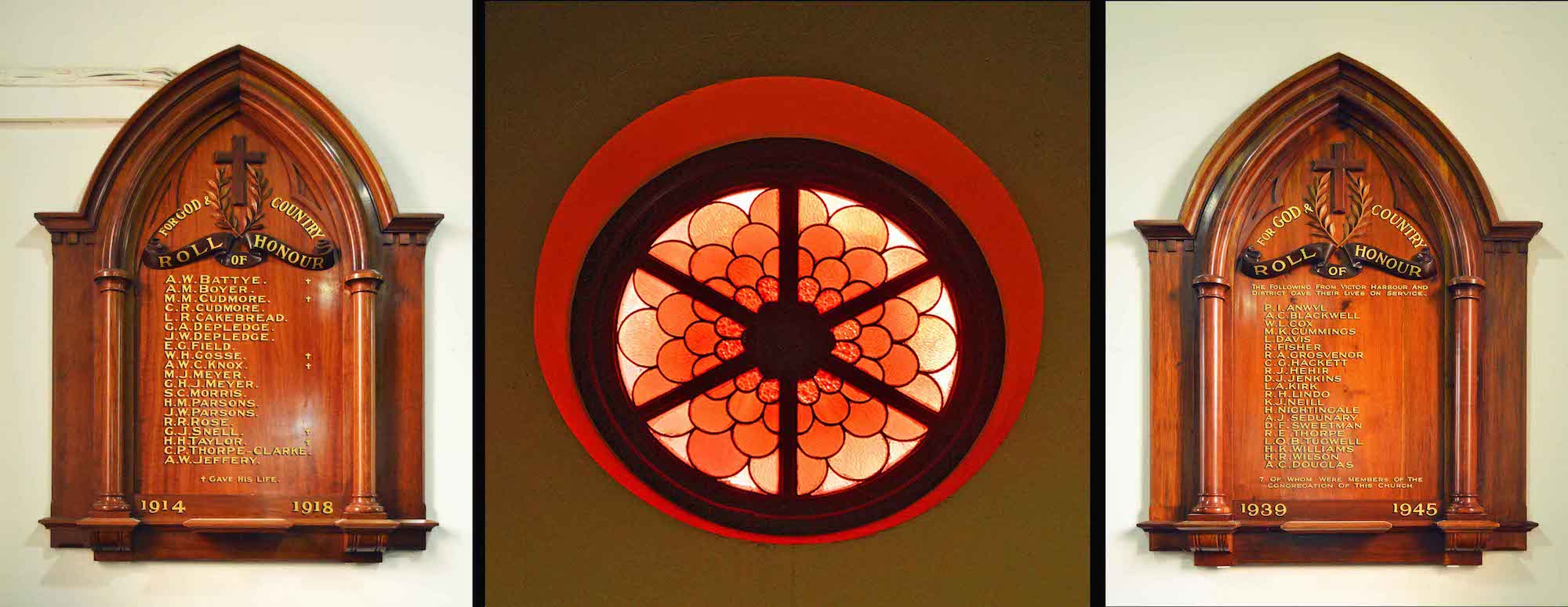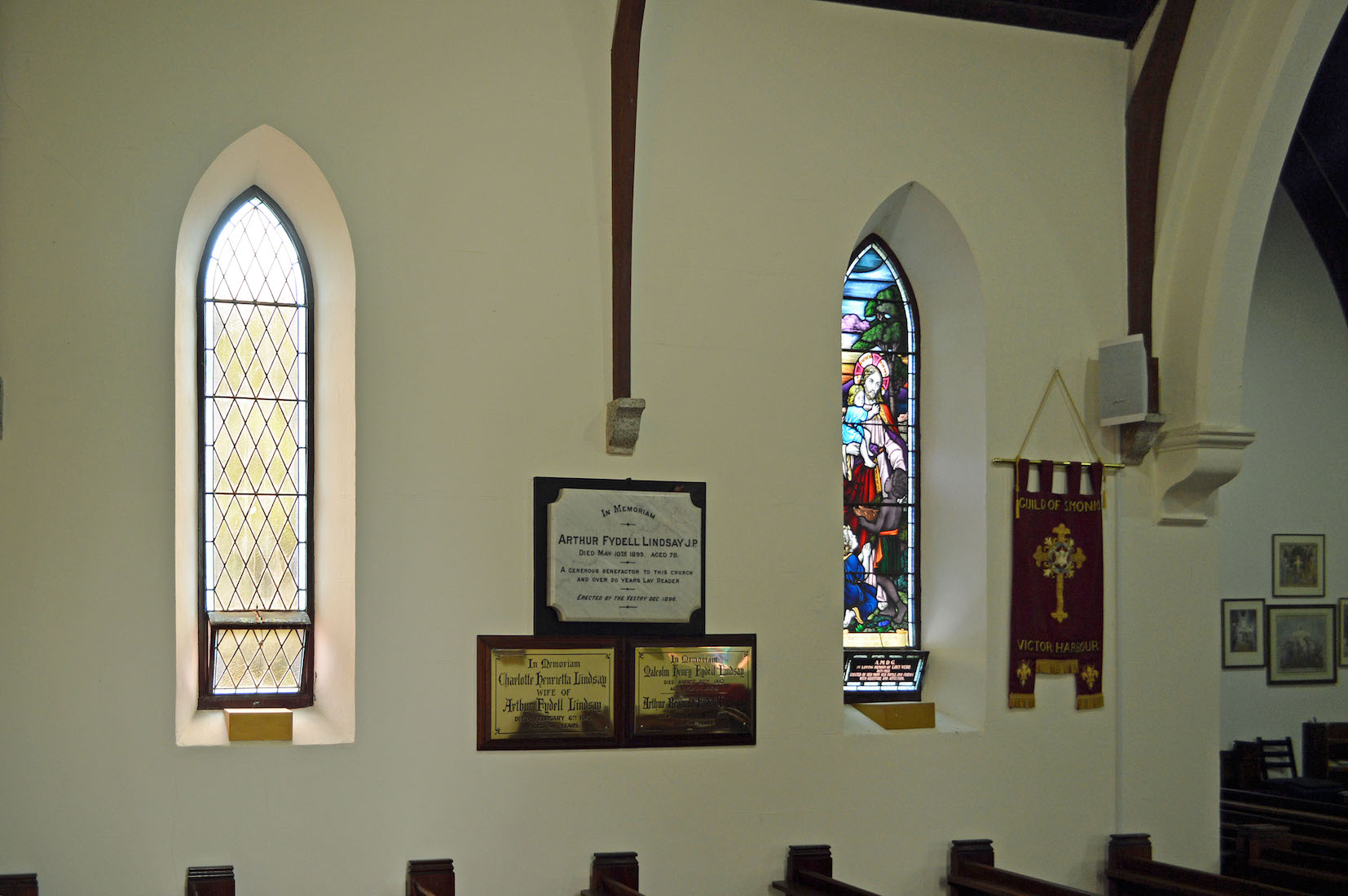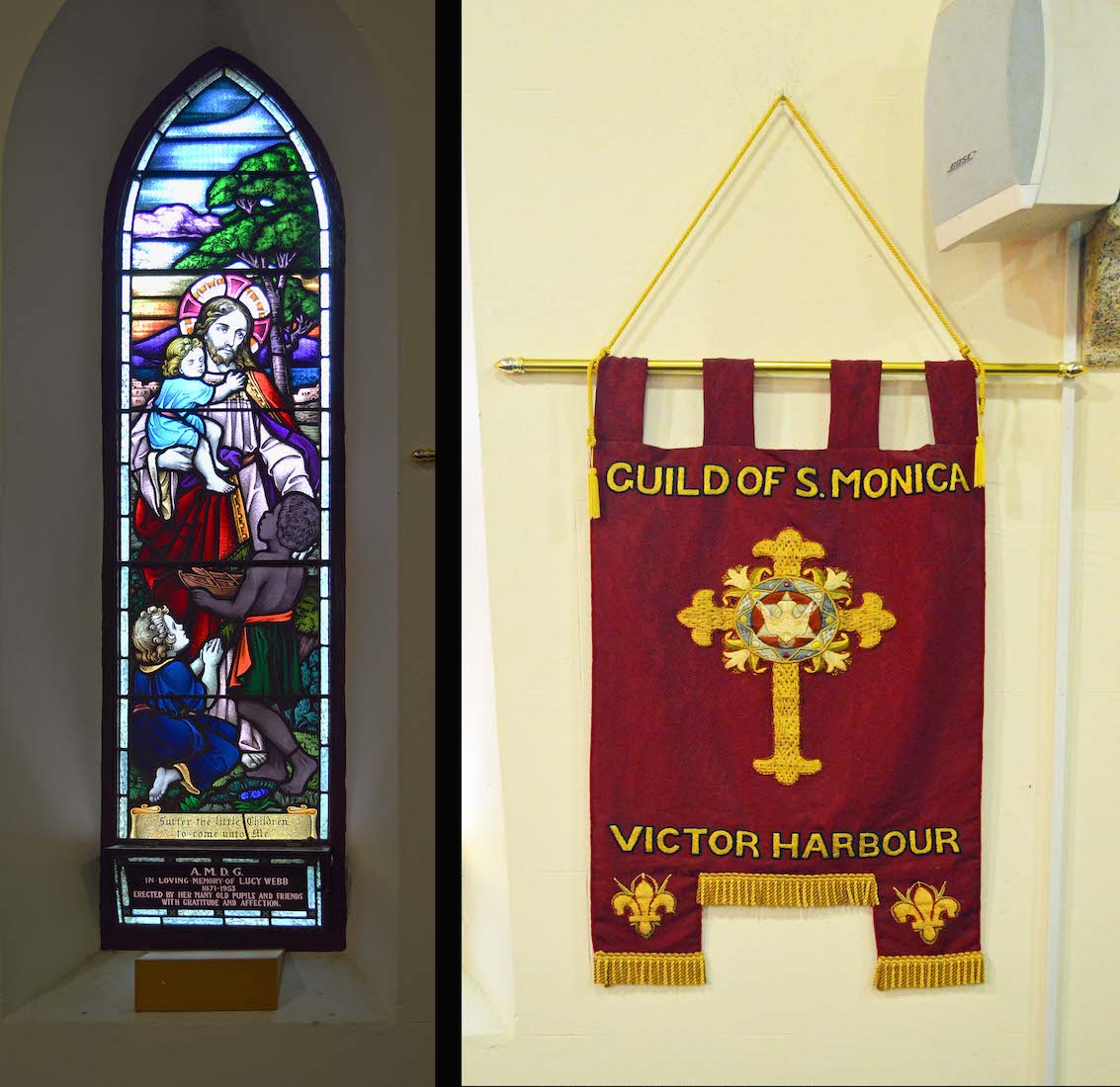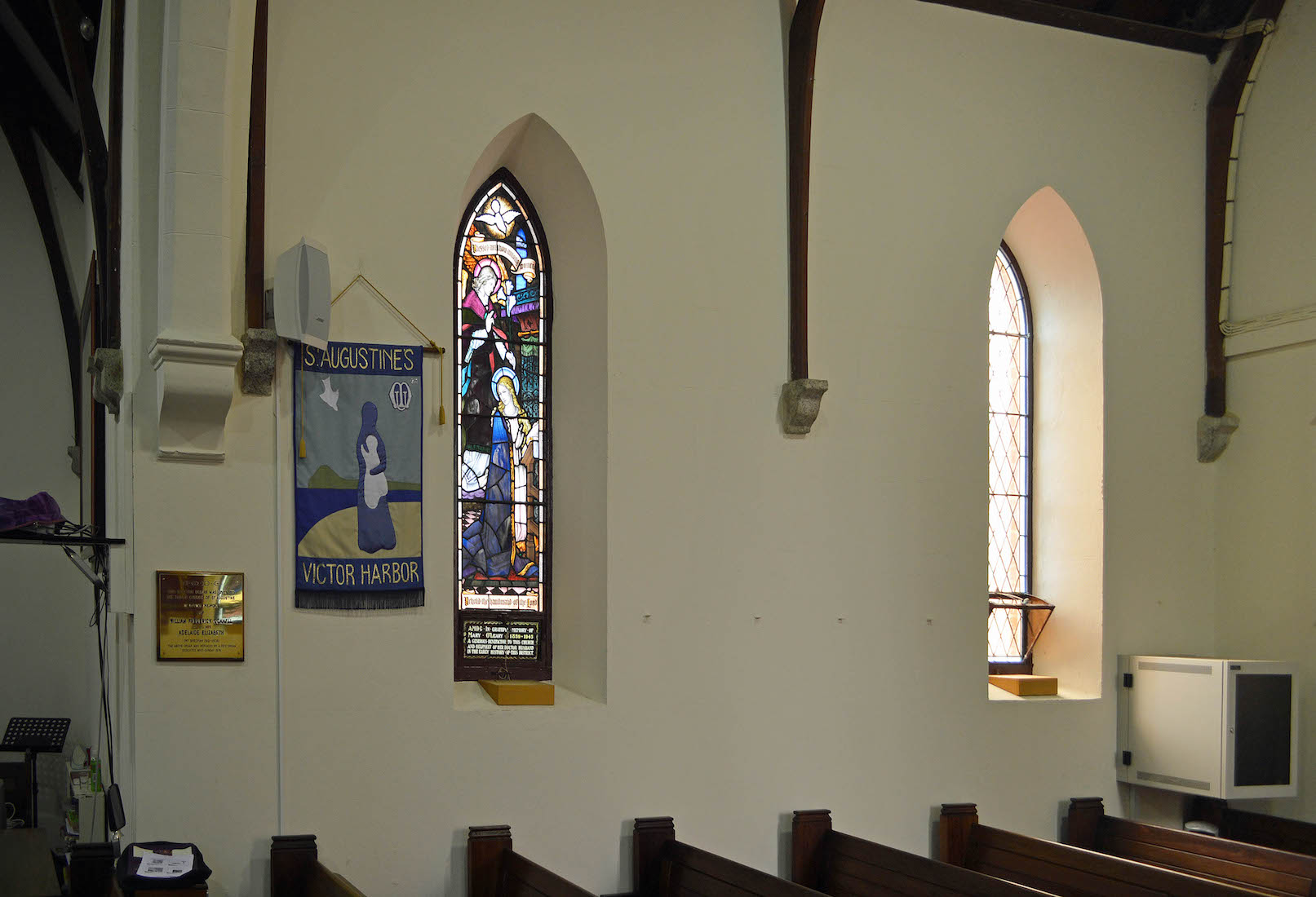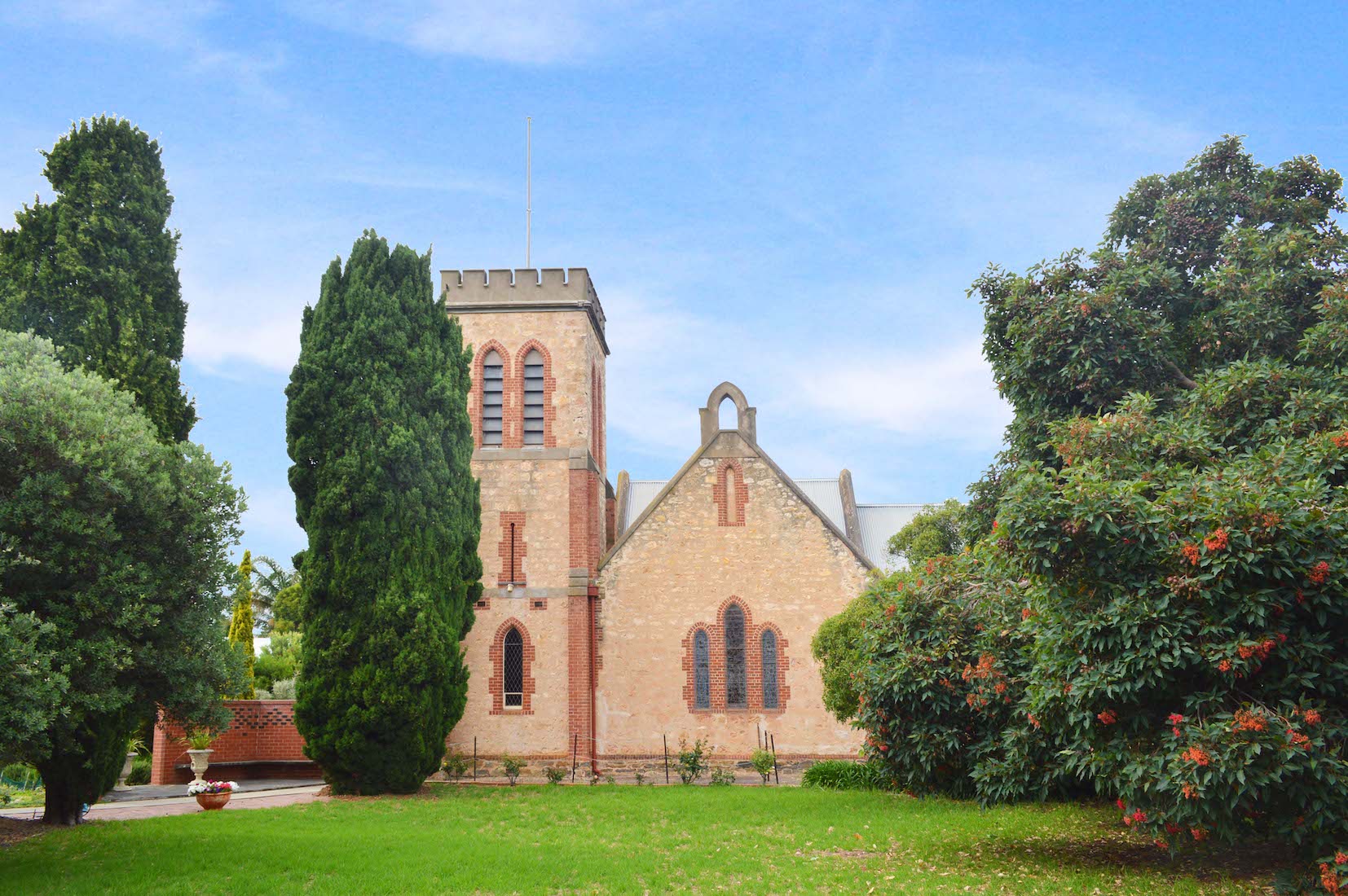
St Augustine’s Anglican Church is in Burke Street, close to the main Victor Harbor shopping centre. The most attractive view is from the north, showing the tower and the North transept across a lawn. A bell fund had been begun in 1895, and the bell, when eventually purchased, was hung in a small arch, still atop the northern gable. (In 1904 Percy Field was paid £1 a year to ring it!)
2. SATELLITE VIEW
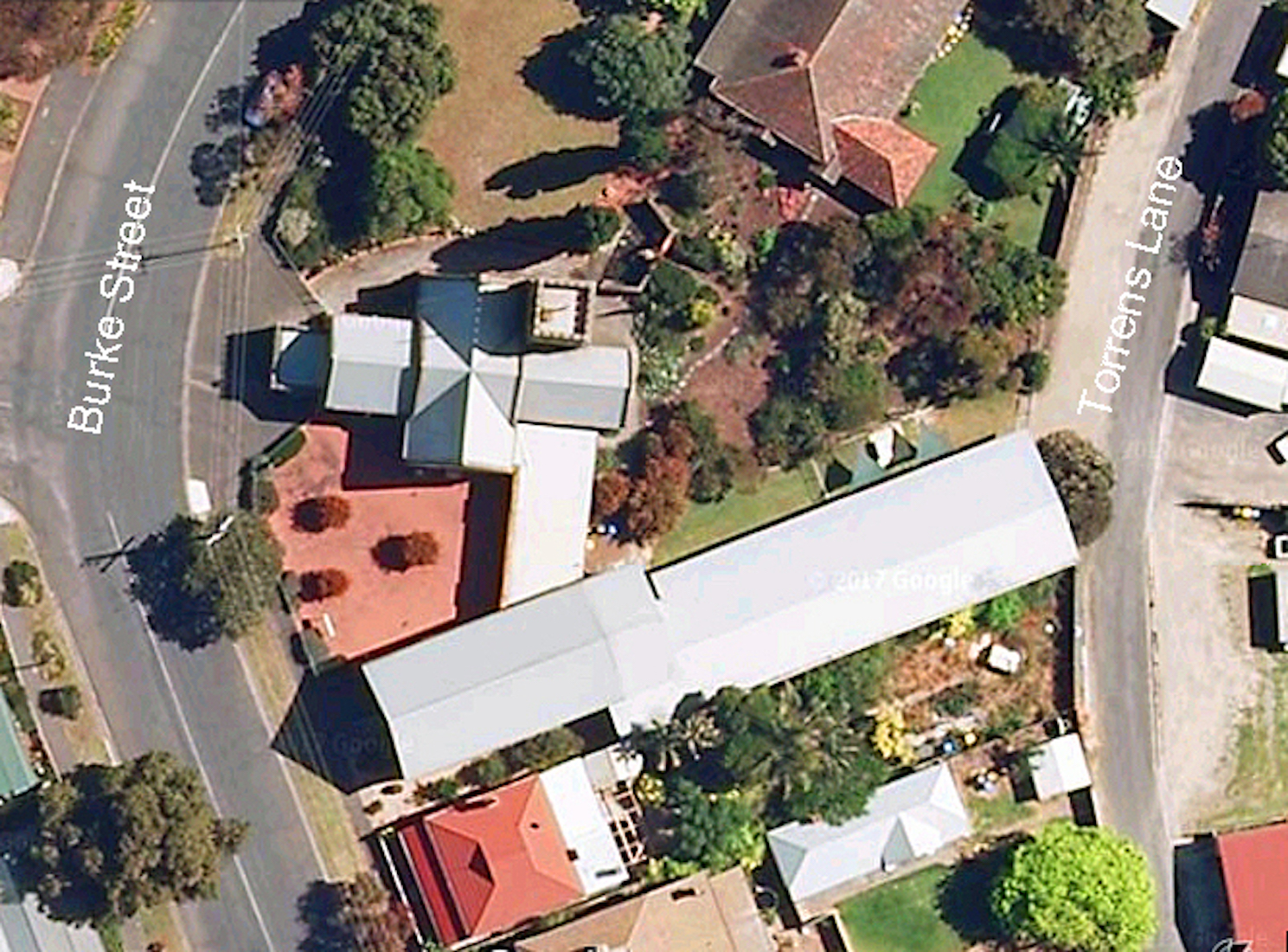
The satellite view shows the cruciform shape of the Church with a very broad transept, the tower at top right, a porch at left by the street, and a link walkway to the hall at the south. The Church is built so that the sanctuary points almost directly east, allowing us to identify the geographical and liturgical directions – thus the sanctuary is to the East (with a capital letter).
3. SIGN
On the 8th March 1870, the small, newly built Church of St. Augustine’s was consecrated by the Bishop of Adelaide, Dr. Augustus Short, just seven years after the beginnings of the little town of Victor Harbor. The little Church was dedicated to St. Augustine of Hippo (354 - 430 A.D.). It stood chapel-like, on the edge of scrub land, and was 30 feet by 20 feet in measurement, with a door on the Western end.
4. HISTORICAL PLAQUE
Near the West door of the Church is a blue historical plaque – one of many to be found around Victor Harbor. These help tourists to locate many of the old buildings in the town, and to learn a little of their history. We learn from this plaque that as further building took place, the original Church came to form the sanctuary of the present Church.
5. WEST VIEW
This is the view from Burke Street. The hall is at right. By 1884 the Church at Port Victor (the old name for Victor Harbor) was finding that in the summer holidays the building was crammed with 50 people or more, for already the town was a popular seaside resort. The necessity of extensions was therefore discussed. The congregation resolved to add two transepts large enough to accommodate 100 extra people. The Church porch was added later in 1962.
6. COLUMBARIUM
Attractive lawns and gardens lie to the North and East sides of the Church, including this Memorial Garden. It has been written that around 1900 ‘the Church must have looked very much like an English village Church with its ivy covered walls and slate roof, half hidden among English trees, with brick bordered gardens, and wrought iron gates’.
7. FROM THE PARISH OFFICE
From certain viewpoints, as for example here, the Church still enjoys a pretty garden setting. Several Norfolk Island hibiscus trees dating from the 1800s still stand in rows behind the Church.
8. TOWER, EAST WALL
The path from the Parish office leads us past the tower, and then past the East wall of the sanctuary with its three lancet windows. The Church tower, along with the nave, was built in 1922 by well known Adelaide builder F. Fricker, at a cost of £1,250. Although built in various stages, the Church has an overall harmonious design. This was largely due to plans laid out by Mrs. Mary Stewart Leishman, a cripple for whom even writing was a great effort..
9. SOUTH COURTYARD
We now enter the link between Church and hall which gives us access to both, and also to the open courtyard facing out onto Burke Street. The area between Church and hall is a low maintenance but rather unforgiving brick paved courtyard with a curiously placed large bush. Behind the bush at left is the 1922 nave, and at right the South transept which was constructed around 1884. Questions have been asked as to why the architect prescribed such small windows for the transepts, but it is likely that shortage of money was a factor.
10. LINK BETWEEN CHURCH AND HALL
The Church centenary in 1970 was marked by the building of a cloistered walkway leading from the Church to the hall and including toilet facilities. The stone, of the same type as the other buildings, was procured from the demolition of ‘Summerlea’, a property built for an early Church member, W.S. Reid.
11. HALL
In July 1907, a start was made towards the erection of the hall. It was felt that a Sunday School room was badly needed, there being 46 children on the roll. The hall was completed by November at a cost of some £400. In 1921 a kitchen was added at a cost of £256. The hall became regularly used for all kinds of functions, euchre games, dances, music lessons and meetings.
12. FRONT PORCH
We now leave the courtyard and enter the Church by the West porch. This is a small but pleasant functional space for greeting and welcoming worshippers. The porch had been planned for many years but was finally built in 1962, during Rev. Cameron's ministry.
13. NAVE
The light walls of the nave contrast with the dark timber pews and roof. We shall shortly investigate the small range of items on the nave walls. I am surprised at the added interest and grandeur supplied by the transepts. Beyond the transepts the sanctuary is separated by its own gothic arch.
14. ROOF
The timber roof is a simple gable construction with supports stretching down the walls. Shown is the roof of the original Church – now the sanctuary. The sanctuary lamp hangs high above: it was given after the death of Mr A.F. Lindsay in 1895 by his daughter. Mr Lindsay of ‘Edzell House’ worked long and hard for the Church.
15. WEST WALL
The West wall features two Honour Rolls and a rose window. The pews used to be subject to ‘pew rents’. A pew rent was an annual fee of approximately one guinea ($2.10) for a whole pew, or less for single sittings, payable by regular occupiers, and entitling them to having a name card on the pew. Up until the 1930’s this provided a regular income for the Church.
16. HONOUR ROLLS AND ROSE WINDOW
The Honour Rolls list the names of local men who served in both World Wars. The names of those who died are marked with a cross. The rose window is particularly notable in the evenings when the western sun shines through.
17. NAVE NORTH WALL
We now investigate the North wall of the nave. We see there are three plaques, an interesting window, and a banner.
18. LINDSAY MEMORIALS
Mr. A.F. Lindsay of ‘Edzell House’ worked long and hard for the Church, being for over 20 years a lay reader. He had arrived in South Australia with the State’s first Governor, in the Buffalo, in 1836. When Mr. Lindsay died suddenly in 1895, aged 78 years, a grateful Vestry erected a marble tablet to his memory, and his daughter later gave the sanctuary lamp. His wife, Charlotte Lindsay was an equally generous worker for the Church.
19. NORTH NAVE WINDOW, BANNER
Dr. Francis J. Douglas was a prominent figure in town and Church affairs from 1902, for close on 60 years. The Douglas family were responsible for raising money for the window 'Christ and the Children', in memory of Miss Lucy Webb. A most appropriate memorial to a lady who really did love children. The Guild of St. Monica was chiefly the work of Rev. C.R. Whereat's ministry. The Guild was in existence in 1933, but renamed in honour of the mother of St. Augustine.
20. SOUTH NAVE WALL
We turn our attention to the South nave wall: a plaque, a banner and an interesting window.


